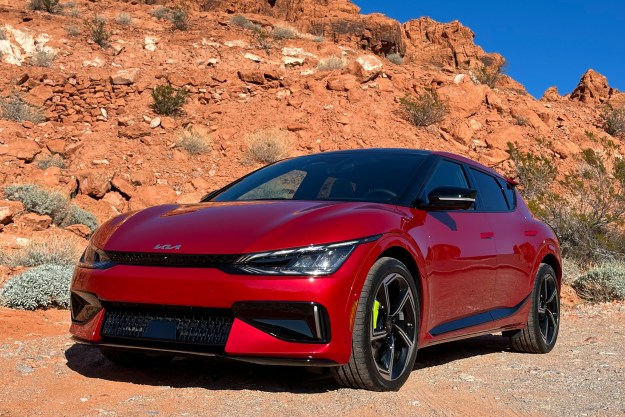
We’ve long believed that electric vehicles (EV) and plug-in hybrids of the future would be best suited to inductive charging systems. For those who are unaware, inductive charging wirelessly transfers power through electromagnetic waves.
While many current EV and plug-in owners are diligent with their recharging habits, they represent early adopters and enthusiasts. As this technology becomes more widespread a less hands-on solution will be necessary. After all, if you don’t plug in your EV over night, it’s no use to you in the morning. Inductive charging solves this issue by wirelessly engaging the charging process as long as the vehicle is within range of the charger. The only issue with inductive systems has been the slow rate with which they transfer power. That is, until now.
Spanish utility company Endesa has developed in collaboration with Fundacion CIRCE a fast-charging induction system. Now in the testing phase, the ground-based charging plate is capable of wirelessly recharging a vehicle to 80 percent in 15 minutes. This number drops, however, if the vehicle isn’t positioned exactly over the plate. The system allows for a margin of around 30 percent for the transmitter to detect the vehicle above it.
For those concerned with the safety of electromagnetic waves, we remind you to read up on the 2013 Toyota Avalon, which features a wireless cell phone charging pad. If it’s safe enough for your cell phone, we wager it’s safe enough for your car.
For the time being, we suspect new EVs to include a wired charging system until inductive system prices are lowered. EVs are already expensive enough that automakers aren’t keen to add more expensive technology to them, which might scare buyers from the showrooms. Give it five years, however, and that story might change.
[Note: The video below is in Spanish]
Editors' Recommendations
- The Maserati GranCabrio Folgore is one of the best-looking EVs yet
- Tech giant reveals nice price for new EV to take on Tesla
- Here’s how Ford will give EV customers Tesla Supercharger access
- Could EVs charge wirelessly? Here’s what you need to know
- This couple just did something remarkable in an EV


